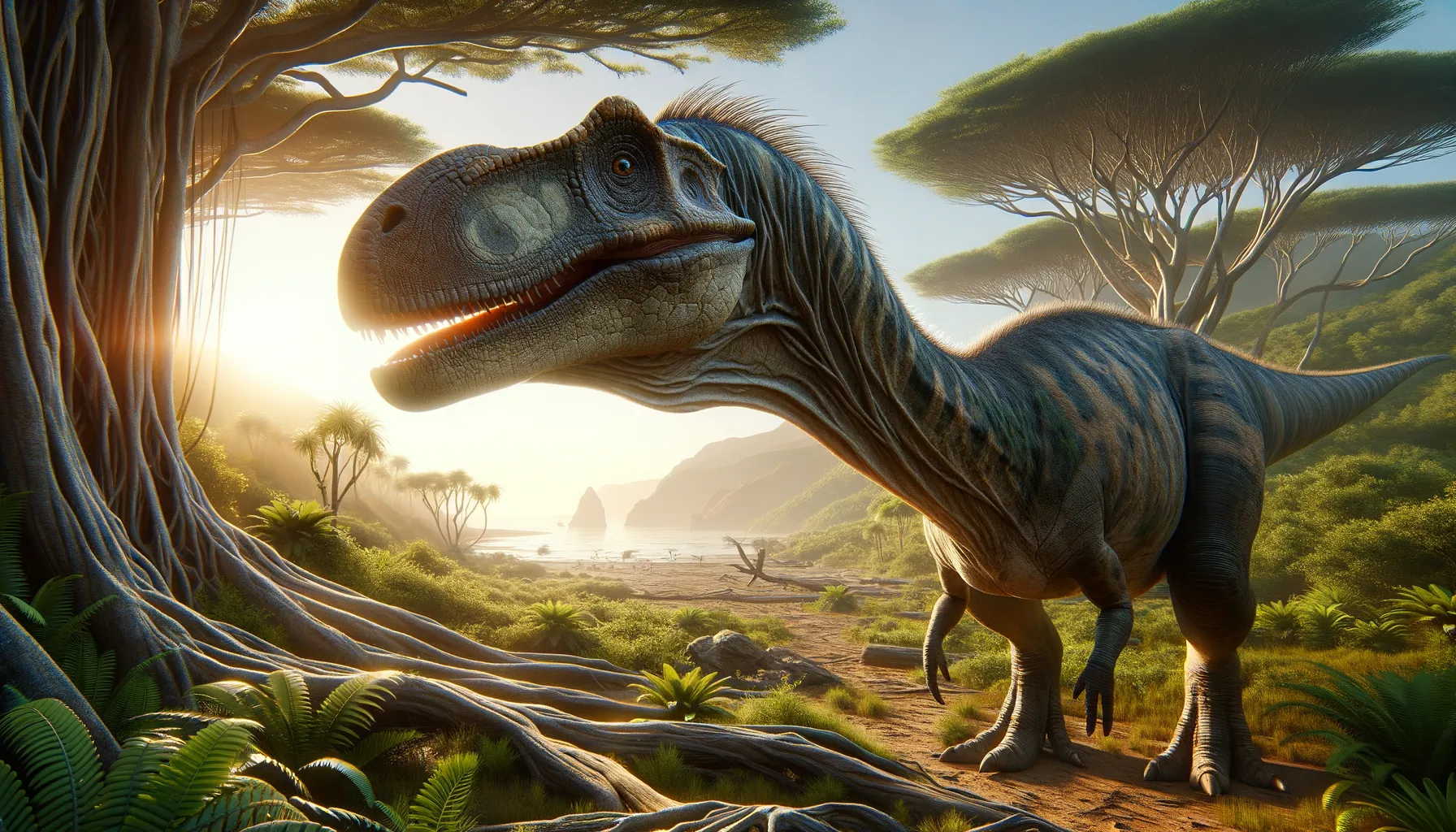
Eolambia
Grazing giant of the Early Cretaceous.
Period
Cretaceous
Length
Up to 9 meters long.
Height
Approximately 2 meters at the hip.
Weight
Around 1.5-2 tonnes.
Eolambia was a large, plant-eating dinosaur that roamed North America during the Early Cretaceous period. Known for its duck-billed appearance, it was part of the hadrosaur family and played a significant role in the ecosystem as a primary herbivore. The genus Eolambia provides crucial clues about the evolution and distribution of early hadrosaurids in North America, shedding light on the transition of these dinosaurs from their ancestors.
Diet
Eolambia was an herbivore, feeding primarily on a wide variety of plants, including ferns, conifers, and other prehistoric flora. Its teeth and jaw structure were well-suited for grinding tough vegetation, making it a highly efficient plant-eater of its time.
Hunting
As a herbivore, Eolambia did not hunt for prey. Instead, it spent much of its time grazing and seeking out new sources of vegetation to sustain its large body.
Environmental challenges
Eolambia faced numerous environmental challenges, including fluctuating climates and limited water sources during droughts. Its habitat was also occasionally disrupted by volcanic activity and tectonic changes, which could dramatically alter the landscape. Predation by larger theropod dinosaurs posed a constant threat, requiring Eolambia to be vigilant and often relying on herd behavior for protection.
Speed
Relatively slow-moving compared to predators.
Lifespan
Estimated at 20 to 30 years in natural conditions.
First discovery
Discovered in the 1990s in Utah, USA.
Fun Facts
- Eolambia lived approximately 100 million years ago during the early Cretaceous period.
- Its name, Eolambia, means 'dawn lambeosaur,' referring to its early position in the evolution of duck-billed dinosaurs.
- Eolambia was a herbivore, meaning it exclusively ate plants.
- Fossils of Eolambia have been found mainly in what is now Utah, USA.
- It is believed that Eolambia could have reached lengths of up to 20 feet, making it a sizeable dinosaur.
- Eolambia traveled in herds, which provided protection against predators.
- The discovery of Eolambia helped scientists understand more about the early evolution of duck-billed dinosaurs.
Growth and Development
Eolambia hatched from eggs and went through rapid growth in its early years, reaching adult size in less than a decade. Young Eolambias were vulnerable to predation and environmental factors, requiring them to grow quickly to improve their chances of survival. This rapid growth was supported by a diet abundant in nutrients found in local vegetation.
Habitat
Eolambia lived in lush floodplain environments with abundant vegetation, providing ample food resources. Its habitat included river valleys and possibly coastal areas, offering access to water and diverse plant life. This environment went through seasonal changes, promoting a broad diversity of plants which attracted many herbivorous dinosaurs.
Interaction with other species
Eolambia coexisted with various other herbivores and carnivores, including small theropods and larger predators like Acrocanthosaurus. Its presence in herds would have provided protection from predators, and it likely competed with other herbivorous dinosaurs for food. These interactions shaped the ecological dynamics of its environment, influencing dietary and social behaviors.
Natural lifespan
In ideal conditions, Eolambia could live 20 to 30 years.
Reproduction
Eolambia reproduced by laying eggs, often in communal nesting sites that ensured greater survival rates for the young. The eggs were likely incubated in nests made of plant matter, providing a stable environment for hatching. Parental care beyond egg-laying remains a subject of scientific investigation.
Social behaviour
Eolambia is believed to have been a social creature, living and moving in herds, which provided safety in numbers against predators. This herd behavior also facilitated the exchange of information about food sources and threats. Such social structures may have played a crucial role in the survival and evolution of the species.
Fossil locations
Fossils of Eolambia have been primarily found in the Cedar Mountain Formation in Utah, USA. The well-preserved specimens provide insight into the anatomy and behavior of this species. These discoveries have been crucial in understanding the diversity of early hadrosaurids in North America.
